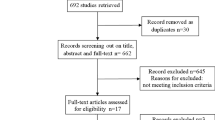Abstract
Ticks and tick-borne diseases (TTBD) pose a major constraint for the development and improvement of the livestock industry. They cause economical losses by decreasing milk production, effecting weight loss, and increasing risk for bacterial, viral, and fungal infections. It has been reported that 80% of 1,200 million cattle are at risk for TTBDs causing a global annual loss of US$7,000 million. Ticks are currently considered to be second only to mosquitoes as vectors of human infectious diseases in the world. There are more than 850 species recognized with approximately 180 in the family Argasidae (soft ticks) and the others in the family Ixodidae (hard ticks). In Asia, the economical losses due to TTBDs is great; however, the knowledge on Asian ticks is scarce and needs intensive studies regarding their geographical distribution, ecology, and diseases transmission. To close this gap, the Asian component of the Integrated Consortium on Ticks and Tick-Borne Diseases (ICTTD-3) organized a meeting held from 26th–28th April 2006 in Pendik, Istanbul, Turkey on the characterization of Asian ticks. Besides the knowledge dissemination, this meeting resulted in a number of achievements such as the establishment of working groups for epidemiological studies and distribution of tick differentiation protocols and diagnostic tools.
Similar content being viewed by others
References
Aydin L, Bakirci S (2007) Geographical distribution of ticks in Turkey. Parasitol Res (this issue)
Ghosh S, Bansal GC, Gupta SC, Ray D, Khan MQ, Irshad H, Shahiduzzaman M, Seitzer U, Ahmed JS (2007) Status of tick distribution in Bangladesh, India and Pakistan. Parasitol Res (this issue)
Guo S, Mu Y, Liu Z, Ma D, Yang S, Ge G, Fang B, Ga D, Ma M, Luo J, Yin H, Seitzer U, Ahmed JS (2007) Serological investigation of ovine theileriosis by ELISA in Gannan Tibet Region of Gansu Province in China. Parasitol Res (this issue)
Iça A, Inci A, Vatansever Z, Karaer Z (2007) Status of tick infestation of cattle in the Kayseri region of Turkey. Parasitol Res (this issue)
McCosker PJ (1979) Global aspects of the management and control of ticks of veterinary importance. Recent Adv Acarol 2:45–53
Omer LT, Kadir MAA, Seitzer U, Ahmed JS (2007) A survey of ticks (Acari:Ixodidae) on cattle, sheep and goats in the Dohuk Governorate, Iraq. Parasitol Res (this issue)
Perry BD, Randolph TF, McDermott JJ, Sones KR, Thornton PK (2002) Investing in animal health research to alleviate proverty. International Livestock Research Institute (ILRI), Nairobi, Kenya
Petney TN, Kolonin GV, Robbins RG (2007) Southeast Asian ticks (Acari: Ixodida): an historical perspective. Parasitol Res (this issue)
Rahbari S, Nabian S, Shayan P (2007) Primary report on distribution of tick-fauna in Iran. Parasitol Res (this issue)
Rasulov I (2007) Ticks status in Central Asia with a special emphasis on Uzbekistan. Parasitol Res (this issue)
Yin H, Schnittger L, Luo J, Seitzer U, Ahmed JS (2007) Ovine theileriosis in China: a new look at an old story. Parasitol Res (this issue)
Acknowledgements
This work was funded in part by the EU coordinated action ICTTD-3 (contract no. IC18-CT95–0009).
Author information
Authors and Affiliations
Corresponding author
Rights and permissions
About this article
Cite this article
Ahmed, J., Alp, H., Aksin, M. et al. Current status of ticks in Asia. Parasitol Res 101 (Suppl 2), 159–162 (2007). https://doi.org/10.1007/s00436-007-0696-3
Published:
Issue Date:
DOI: https://doi.org/10.1007/s00436-007-0696-3




